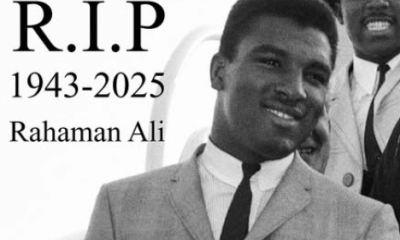Featured Articles
The Hauser Report: Cinematic and Literary Notes
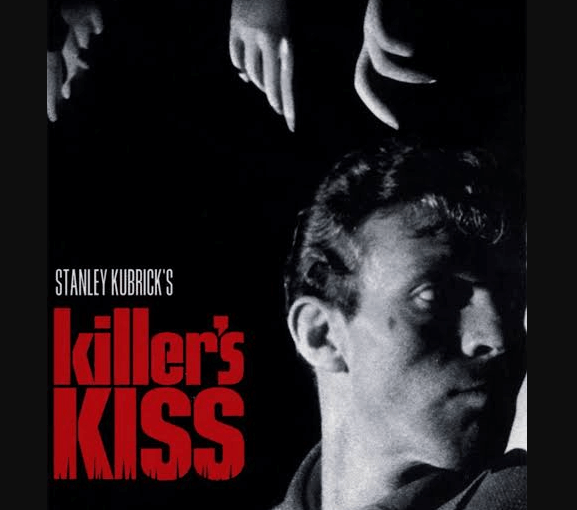
The Hauser Report: Cinematic and Literary Notes
The first film produced and directed by the legendary Stanley Kubrick (whose credits include A Clockwork Orange, Spartacus, Dr. Strangelove, Lolita, and 2001: A Space Odyssey) was a 12-minute documentary now available for free on YouTube entitled The Day of the Fight that tracked middleweight Walter Cartier on the day of his April 17, 1950, fight in Newark against journeyman Bobby James.
In 1955, Kubrick returned to boxing with Killer’s Kiss – a feature film that he produced and directed after co-authoring the script with Howard Sackler (who later won a Tony Award and Pulitzer Prize for The Great White Hope).
Killer’s Kiss isn’t about boxing. But the main character is a fighter.
Davey Gordon (played by Jamie Smith) is a past-his-prime boxer with a good punch and weakening chin.
Gloria Price (Irene Kane) is a “dance hostess” (also known as a taxi dancer) who works in an establishment called Pleasureland where single men pay by the dance to dance with her or one of the other hostesses.
Vincent Rapallo (Frank Silvera) is the appropriately loathsome mobster who runs Pleasureland.
Kubrick made Killer’s Kiss on a shoestring budget of $75,000 ($900,000 in today’s dollars). Much of it was shot on location in Times Square, Penn Station, and rundown sections of the Bronx. To save money, he often worked without the requisite city film permits. The movie doesn’t recreate the New York of 1955. It is the New York of 1955.
Killer’s Kiss tracks three days in Gordon’s life beginning with a knockout loss at the hands of an up-and-coming prospect. The fight scenes are nicely done. There’s a murder. The black-and-white cinematography is grim and gritty. And the dialogue is entertaining.
Davey: Something happened.
Gloria: Yes, I know
Davey: Do you know?
Gloria: Sure. You kissed me.
Davey: Is that all?
Gloria: That’s all I saw. And I was watching all the time.
“I didn’t know it then,” Davey says, breaking down the fourth wall between himself and movie viewers. “But I was already in over my head. And I couldn’t have cared less.”
It’s a good movie. Check it out.
***
Marvelous Marvin Hagler is on the short list of boxing’s greatest warriors. He claimed the middleweight throne with a 1980 knockout of Alan Minter in London and successfully defended his title twelve times before losing a split decision to Sugar Ray Leonard in 1987. His 1985 firefight against Thomas Hearns (KO 3) was one of the most enthralling prizefights ever. Blood & Hate by Dave Wedge (Hamilcar Publishing) tracks Hagler’s hard road to glory from its beginning through the Minter fight.
Hagler was 5-feet-9-inches tall and fought at middleweight for his entire career. As Carlos Acevedo noted, “He had ridiculous stamina, ridiculous endurance, and an iron chin. He was never stopped on cuts. He could hurt you from either side. He had tremendous boxing skills. His punches were compact. He didn’t have the fastest hands but he accentuated his combinations by placing them perfectly. He just tore people up.”
Frank Lotierzo added, “When you break Hagler down as a fighter, there is not one single thing not to like. He was always in shape. He ate, drank, and slept boxing. He had power. He could box. He could brawl. He had one of the best chins ever.”
“There’s a monster that comes out of me in the ring,” Hagler said. “I think it goes back to the days when I had nothing. It’s hunger. That’s what the monster is. And it’s still there.”
Wedge recreates Hagler’s early life in Newark and Brockton in detail. Those hardscrabble years and the hard road that Marvin was forced to travel to reach the middleweight throne are smoothly written. There’s an honest portrait of Brockton’s patron saint, Rocky Marciano. And Hagler’s relationship with Guerino (“Goody”) and Pasquale (“Pat”) Petronelli is nicely told.
Goody was Hagler’s trainer from the day that 15-year-old Marvin walked into his gym. After Hagler turned pro, Pat took the lead on managerial duties. When the trio began working together, the Petronellis were the only white people in Marvin’s life. He didn’t trust white people. But over time, Goody and Pat earned his trust.
Blood & Hate culminates with Hagler’s destruction of Minter to claim the middleweight crown before a heavily white-nationalist crowd that rained bottles down on the ring after the third-round stoppage. The later years of Hagler’s ring career and other details of his life are summarized in a short epilogue.
Wedge is a decorated journalist and author. But there are problems with Blood & Hate. For starters, the book is riddled with factual errors.
The first red flag appears on page 6, when Wedge writes, “Marvin was born on May 23, 1954 – just as the US was seeking to exit the Korean War. Three days before Marvin’s birth, Puerto Rican Olympic boxer Angel Figueroa, a member of the 223rd Infantry Regiment of the US Army, was killed at ‘The Punchbowl’ in Korea, an infamous battleground during the war. It was a devastating casualty for Puerto Rico – and the boxing world – that rocked the nation and made global headlines.”
That paragraph troubles me for several reasons: (1) It smacks of hyperbole, which is present throughout the book; (2) The connection between Hagler and Figueroa seems forced; and (3) The date is just plain wrong. According to Wikipedia and other online sources, Figueroa (who lost in the second round of the 1952 Olympics) died on May 20, 1953 – a full year earlier than Wedge says he did.
Writing about the first Marciano-Walcott fight, Wedge states that, “bleeding profusely from a gash across his nose,” Marciano “mounted an incredible comeback” to knock out Jersey Joe Walcott and claim the heavyweight crown. But Wedge appears to have confused Walcott-Marciano I with Marciano’s second fight against Ezzard Charles. Against Walcott, Marciano bled from his forehead after a clash of heads in the sixth round.
Wedge also writes that “Joe Louis was knocked down in eleven fights.” I’m aware of seven: Schmeling I, Braddock, Galento, Buddy Baer, Walcott I, Walcott II, and Marciano.
All writers (myself included) make mistakes. But errors like this (and there are more) undermine the credibility of Wedge’s scholarship and make it difficult to fully trust the book.
Also, Blood & Hate reads a bit too much like a hagiography. The epilogue makes only a passing reference to the fact that Hagler (who is portrayed throughout the book as an attentive loving husband) and Bertha (his first wife and the mother of his five children) divorced. There is no mention of the restraining order that Bertha got, barring Marvin from visiting their five children at their suburban Boston home and her demand that he seek treatment for excessive drug use after his ring career ended.
Marvin Hagler was one of the greatest fighters of all time. He was, as Lou DiBella states, “his own guy from beginning to end.” Ultimately, he enjoyed a fulfilling life in retirement until his much-too-early death in 2021 at age sixty-six. But he wasn’t a saint.
Wedge’s entertaining, often-informative book could have been better.
****
Around the World in 80 Fights (Headline Publishing Group) is a collection of reminiscences by British journalist and presenter Steve Bunce that recount his journey through boxing.
Bunce has a way with words. Freddie Roach, he writes, “was plagued by honesty in a business that has always treated the truth like some type of disease.” He recalls former WBC president Jose Sulaiman reaching out to comfort Oliver McCall after a loss “with a pat, a stroke as gentle as a master pickpocket at work.” Speaking of Donald Trump’s days in boxing, Bunce opines, “Trump was just one of a thousand hustlers I have met on the road to the rings. And he wasn’t even the best hustler.”
Bunce calls the boxing ring “a sacred square where bravery is demanded” and offers thoughts like:
* “Some of the journeys I have been on with fighters lasted for years. Some are friends now for life. There are others who still ignore me because I picked against them in the paper before a fight. Fighters have a tremendous ability to absorb punishment but often have the thinnest skin.”
* “I have had blood on dozens of shirts, my face, my writing hand, and notepads. It’s evidence of a mad addiction.”
* “Street fights never last as long as you think.”
* “Boxing is a sport of extremes. And the people running it, and those run by it, are extreme.”
Bunce also has an ear for quotes:
* Bernard Hopkins: “The ghetto life couldn’t break my spirit. The penitentiary couldn’t break my spirit. The business of boxing couldn’t break my spirit.”
* Azumah Nelson: “I want money. Glory is no good to an old man like me.”
* Larry Holmes: “I’m here [in Denmark to fight Brian Nielsen] because I’m overweight and old. That’s why they picked me.”
* Crawford Grimsley (to George Foreman after Foreman accused him at the post-fight press conference of “running all the time” during their 1996 encounter in Tokyo): “George; you’re wearing sunglasses. So I wasn’t running all the time.”
* Joe Frazier (when asked about his hatred for Muhammad Ali): “All I ever wanted that man to do was apologize to me. Just me and him in a room, man-to-man.”
And Bunce strikes some poignant notes.
Joe Bugner fought Muhammad Ali (twice), Joe Frazier, Jimmy Ellis, Greg Page, Bonecrusher Smith, Frank Bruno, Henry Cooper, Ron Lyle, and Earnie Shavers. That’s heavy lifting. Bugner is now in a permanent care facility suffering from dementia and has no memory of any of his fights.
****
Requiem for a Heavyweight is justifiably celebrated as one of the greatest boxing movies of all time. But before it was a feature film, it was staged on live television. Rod Serling wrote and produced the play in 1956 for a popular American show called Playhouse 90 with Jack Palance in the lead role. One year later, Blood Money (as the English production was titled) was televised live in the United Kingdom by the BBC with an unknown actor named Sean Connery replacing Palance. The 1962 film version starred Anthony Quinn as the over-the-hill fighter with a conniving manager (played by Jackie Gleason) and compliant trainer (Mickey Rooney). A young heavyweight prospect named Cassius Clay had a bit part. But by then, Serling was famous for The Twilight Zone.
The Twilight Zone was broadcast by CBS and consisted of weekly stand-alone stories with no recurring characters. Episodes focused on the human condition, science fiction, and the paranormal. Serling was the show’s creator, lead writer, executive producer, and host. Each episode began with his off-screen voice intoning. “There is a fifth dimension, beyond that which is known to man. It is a dimension as vast as space and as timeless as infinity. It is the middle ground between light and shadow, between science and superstition. And it lies between the pit of man’s fears and the summit of his knowledge. This is the dimension of imagination. It is an area which we call The Twilight Zone.”
The Twilight Zone ran on CBS for five seasons, from October 2, 1959, to June 19, 1964. Each episode was twenty-five minutes long plus commercials (except for Season 4 when episodes were twice that length). There were 156 episodes, each one filmed in black-and white.
Serling had an eye for talent. Young actors in Twilight Zone episodes who later became stars included Robert Redford, Robert Duvall, William Shatner, Burt Reynolds, Telly Savalas, Charles Bronson, Peter Falk, Dennis Hopper, Ron Howard, Jack Klugman, Leonard Nimoy, Martin Landau, Cloris Leachman, and Elizabeth Mongomery. Already-established actors like Dana Andrews, Art Carney, Burgess Meredith, and Ed Wynn also had starring roles.
What does The Twilight Zone have to do with boxing?
On October 4, 1963, the second episode of season five (titled “Steel”) aired for the first time. One year earlier, Benny Paret had been beaten to death by Emile Griffith in a nationally televised fight. There were calls in Congress and elsewhere for the abolition of boxing.
“Steel” is set in 1974. Professional boxing has been banned in the United States and replaced by android boxing. Steel Kelly (played by Lee Marvin) is a former professional fighter who now manages an android boxer called “Battling Maxo.” But Battling Maxo is falling apart and in desperate need of a mechanical overhaul. He’s the equivalent of a shot fighter. Throw in a shady promoter, a trainer-mechanic, and let your imagination run wild.
The Twilight Zone was revived in 1985, 2002, and 2019. But those shows lacked Serling’s genius. The Writers Guild of America ranked the original Twilight Zone as the third best-written television series of all time (behind The Sopranos and Seinfeld). Rolling Stone placed it at #7 on its list of the one hundred greatest television shows ever.
All of the original Twilight Zone episodes (including “Steel”) are available online free of charge on Pluto TV and are also included in various subscription packages such as Amazon Prime.
Thomas Hauser’s email address is thomashauserwriter@gmail.com. His most recent book – The Most Honest Sport: Two More Years Inside Boxing – is available at https://www.amazon.com/Most-Honest-Sport-Inside-Boxing/dp/1955836329
In 2019, Hauser was selected for boxing’s highest honor – induction into the International Boxing Hall of Fame.
To comment on this story in the Fight Forum CLICK HERE
-
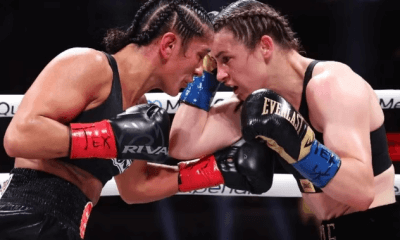
 Featured Articles4 weeks ago
Featured Articles4 weeks agoResults and Recaps from New York Where Taylor Edged Serrano Once Again
-
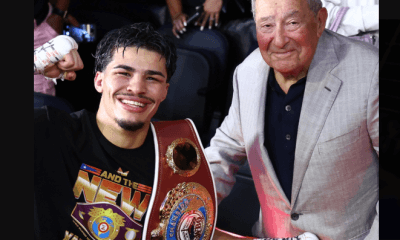
 Featured Articles2 weeks ago
Featured Articles2 weeks agoThe Hauser Report: Zayas-Garcia, Pacquiao, Usyk, and the NYSAC
-
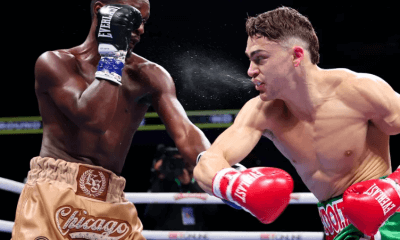
 Featured Articles5 days ago
Featured Articles5 days agoOscar Duarte and Regis Prograis Prevail on an Action-Packed Fight Card in Chicago
-

 Featured Articles4 weeks ago
Featured Articles4 weeks agoResults and Recaps from NYC where Hamzah Sheeraz was Spectacular
-
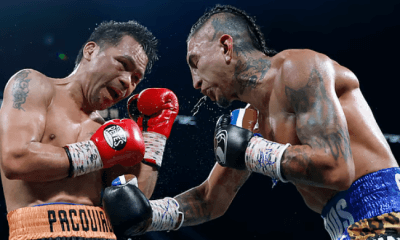
 Featured Articles3 weeks ago
Featured Articles3 weeks agoManny Pacquiao and Mario Barrios Fight to a Draw; Fundora stops Tim Tszyu
-
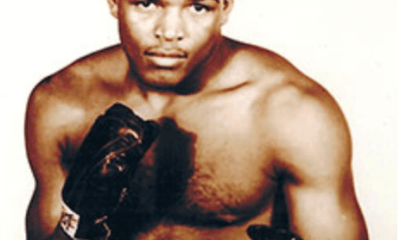
 Featured Articles4 weeks ago
Featured Articles4 weeks agoPhiladelphia Welterweight Gil Turner, a Phenom, Now Rests in an Unmarked Grave
-
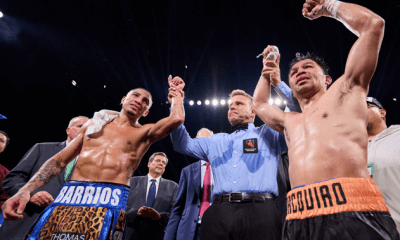
 Featured Articles2 weeks ago
Featured Articles2 weeks agoArne’s Almanac: Pacquiao-Barrios Redux
-

 Featured Articles1 week ago
Featured Articles1 week agoRemembering Dwight Muhammad Qawi (1953-2025) and his Triumphant Return to Prison




